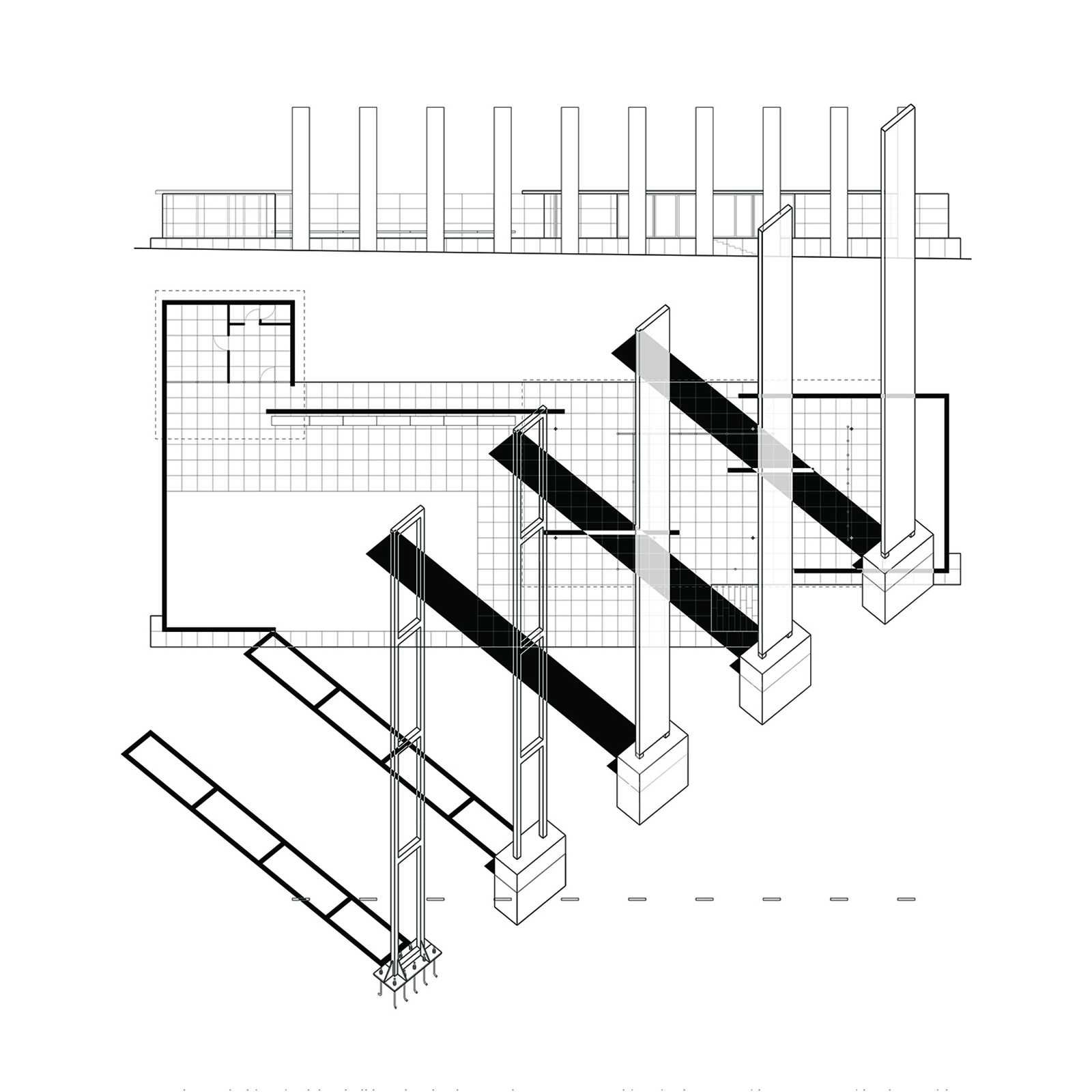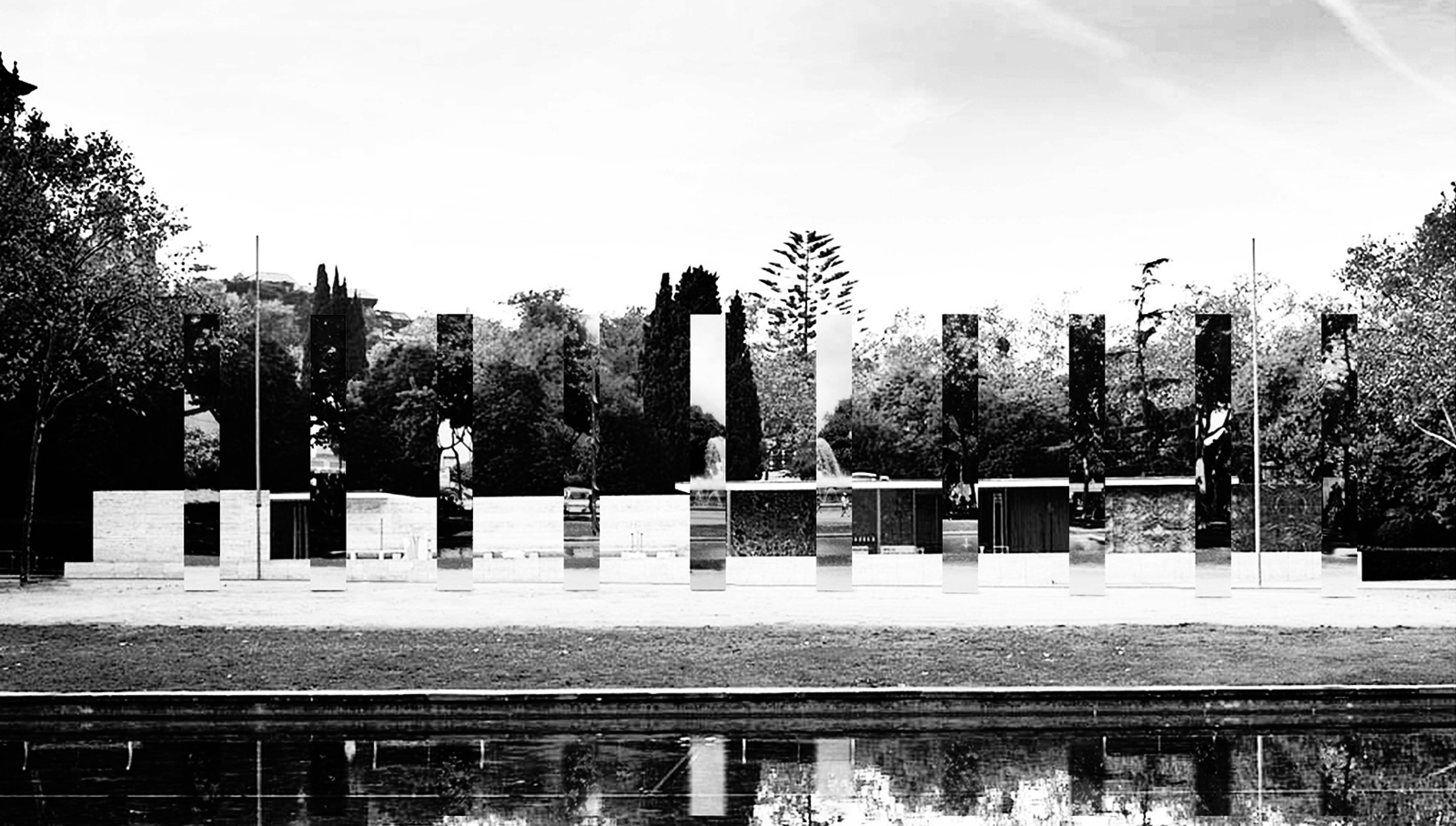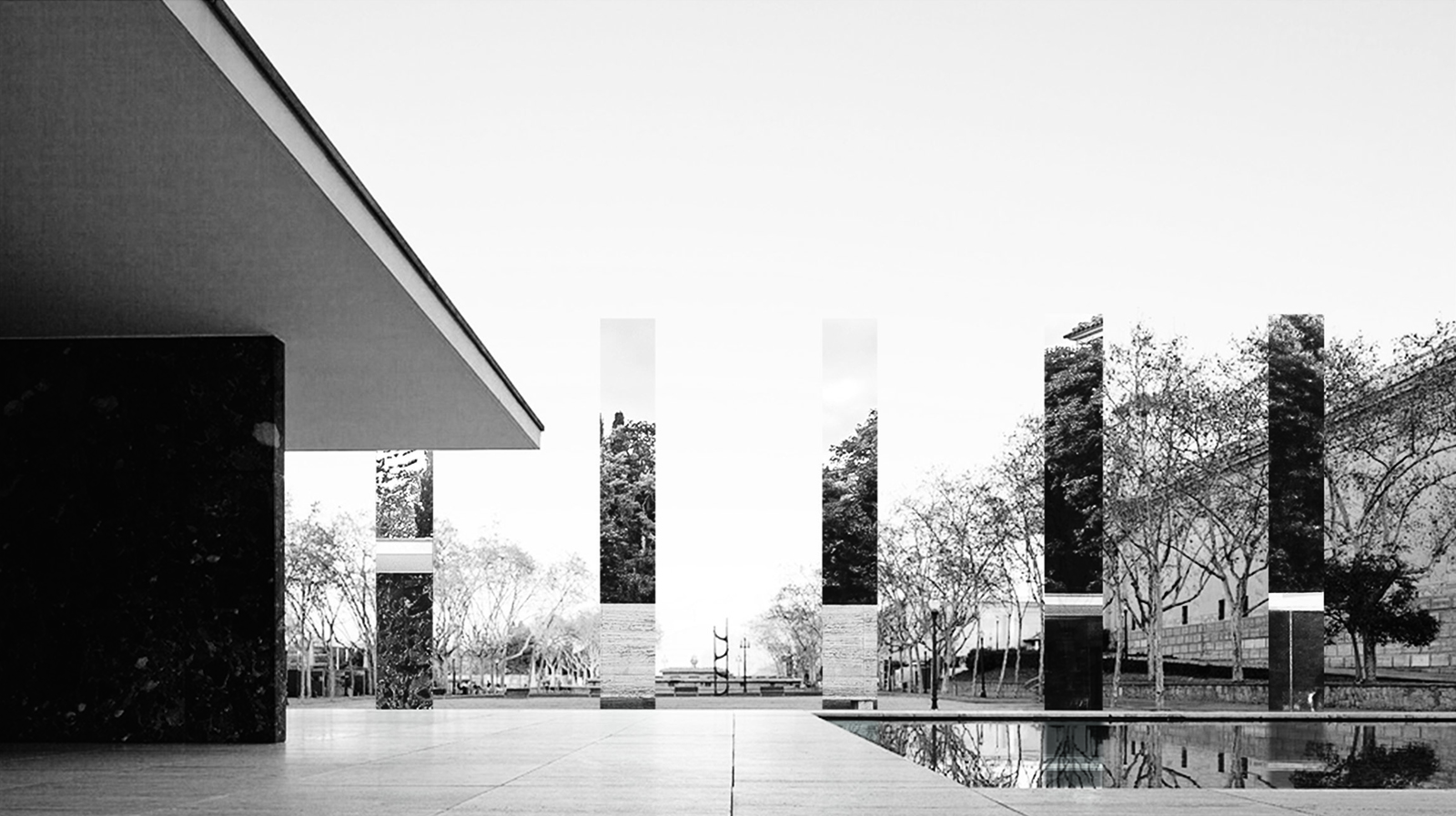Finalist Fear of Columns competition
Team Andrea Gimeno, Lluís J. Liñán, Xevi Lluch Client Mies van der Rohe Foundation Year 2016

“There is no last year, and Marienbad is no longer to be found on any map. This past, too, has no reality beyond the moment it is evoked with sufficient force; and when it finally triumphs, it has merely become the present, as if it had never ceased to be so”.
Alain Robbe-Grillet, Last year at Marienbad
We read the history of Mies van der Rohe’s German National Pavilion in Barcelona as a story about persuasion. The persuasion of an idea cast from the void that wanders a labyrinth of interpretations, mistakes and casual findings until it finally comes true. In this story, the object that appears at the end of the journey is no longer the original, but its echo –a specular entity with the special dignity of images. The unique paradox in this persuasion is that the beauty of the new object is deeply rooted in its absences.
The project we present here intends to draw a cross section of this journey in order to put together the material reality of the existing building with its virtual negative. The eight ionic columns and two pedestals that once accompanied the German Pavilion in the International Exhibition in 1929 come back to life as a filter that projects its own absence on the built echo. Ten monolithic, impassible mirrors emerge as a rhythmed series of vertical surfaces where a sequence of reflections, rather than diluting the presence of the building, unveil its virtuality, placing the beholder in an intermediate point of this sinuous story. Framed through the eyes of the visitor, the reflections unscramble the presence of the Pavilion and retrieve different moments of its history.
From the outside, the glossy rectangles blur the distinction between the city and the building, constructing a visual sequence that positions Barcelona as a necessary subject in the definition of the image of the Pavilion. From the plinth of travertine marble, symmetric fragments of the building are confronted, inverted point by point, to the image of the reconstruction, thus revealing to the beholder its virtual essence.
At the end of this story, all the verbal tenses get trapped in the reflective surface of the crystallized filter, and it is just the present that remains. The present of a glance persuaded by an idea.


